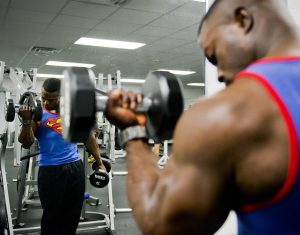Fitness Hacks: 3 Ways to Maximize Your Time at the Gym

Article Credit: Farlyn Lucas
So, you made the decision that you are going to get fit. You bought the clothes. You got fitted with a pair of running shoes, and you even joined a gym. But the problem is, like most of us, you really don’t have a lot of time. After all, you’re probably squeezing as much as you can into your day. Between work, kids, laundry, and, let’s not talk about the chores that have been waiting since last month, there just isn’t much time to spare.
So, the question becomes: how do you get fit on a seriously time-cramped schedule?
The answer is you make the most out of the time you have. It’s hard to deny the mental health benefits of routine exercise, but making that a reality can sometimes be tricky. Read on for 3 ways to maximize your time at the gym, so you won’t have to miss out on this major benefit to your psyche and to your physical health.
Trade the Cardio for Weights
It’s interesting that gyms almost always place their cardio equipment at the front of the gym, while weights are toward the back. When you enter the gym, you immediately see people sweating away on treadmills, stairmills, and elliptical machines, and you probably think that’s what you should be doing too.
However, nothing could be further from the truth. Here’s why: most people don’t have enough muscle mass on their body to justify extreme levels of cardio. Their body composition – the ratio of body fat to lean mass – is way out of whack, and they are carrying way too much fat, but also way too little muscle. This can happen for a variety of reasons, but the most common one is that most people don’t do things that build muscle.
Muscle mass matters because muscle burns much more calories than fat. So, the more muscle we have on our bodies, the more calories we burn and the more weight we lose. Cardio exercise, while it burns calories in the moment, doesn’t burn calories over the long haul – like when we are sitting at our desks.
To begin, start with exercise that incorporates large muscle groups, such as pullups, pushups, and squats. From there, move toward exercises that target smaller muscle groups such as bicep curls, tricep pushdowns, calf raises, hamstring curls, and leg extensions.
Incorporate Plyometrics
Plyometrics are a type of exercise focused on explosive movements.
Typically, plyometrics involve some form of jumping, such as jumping on or off boxes, jumping over barriers, or doing distance jumps. Even jumping jacks can be considered a mild form of plyometrics.

The neat thing about plyometrics is that they build muscle and burn a serious number of calories. Think of them as a cross between cardio and lifting weight, only a lot more effective. Plyometrics can also be really fun because different jumps can be strung together to create a “jump course.”
For example, you can jump onto a box, off the box, onto another box placed beside the first one, then off and onto another one placed in front of the second box.
One thing to keep in mind when you begin doing plyometrics is to start slowly, with small jumps and a small number of jumps for each session. A good rule of thumb is less than 50 jumps to begin, no depth jumps (jumping down), and no jumps higher than one foot.
Use High-Intensity Intervals
Cardio is great, but instead of spending several long hours plugging away on a machine, incorporate high intensity segments (or intervals) into your workout.
Not only do high-intensity intervals burn way more calories than a steady state session – this is partly due to the residual effect of a high heart rate – but they also burn more calories after your session is complete. One could think of high intensity intervals as cardio on overdrive.
To begin, start with a 3-minute warmup, then increase your intensity to as high as you can for 30 seconds. Follow this with a two-minute rest, then another 30-second interval. Complete 10 cycles of this, followed by a three-minute cool down. When you are finished, you should have done 31 minutes of cardio, while making a serious dent in your caloric expenditure for the day.
Making the Most of Your Time at the Gym
Maximizing your time at the gym may not be the very first step to getting fit, but it’s likely the one that will keep you coming back.
By trading the cardio for weights, practicing plyometrics, and using high-intensity intervals, you will not only improve your mental health, but you’ll feel healthier, and see quick results – all of which will help you want to keep going back.











